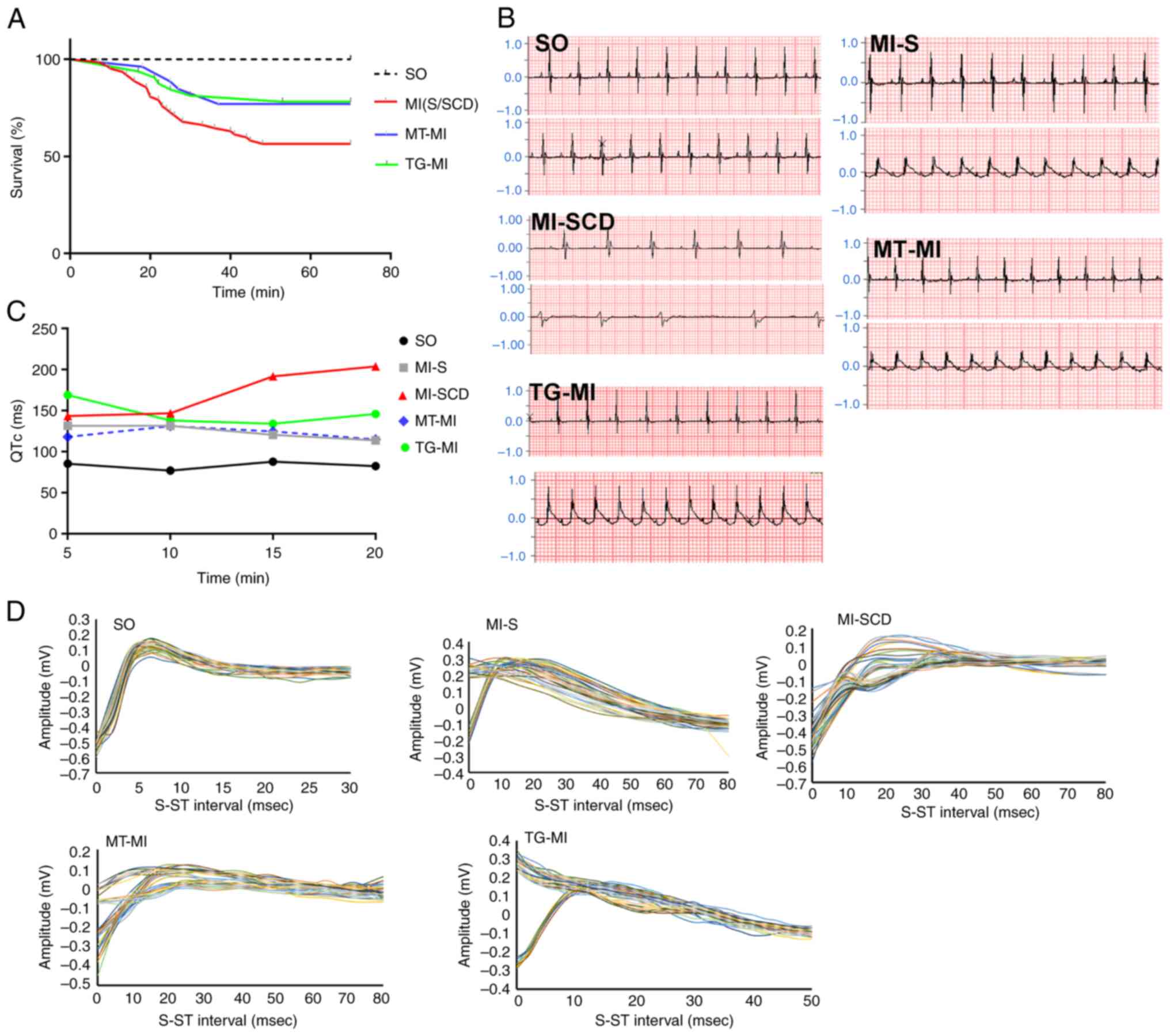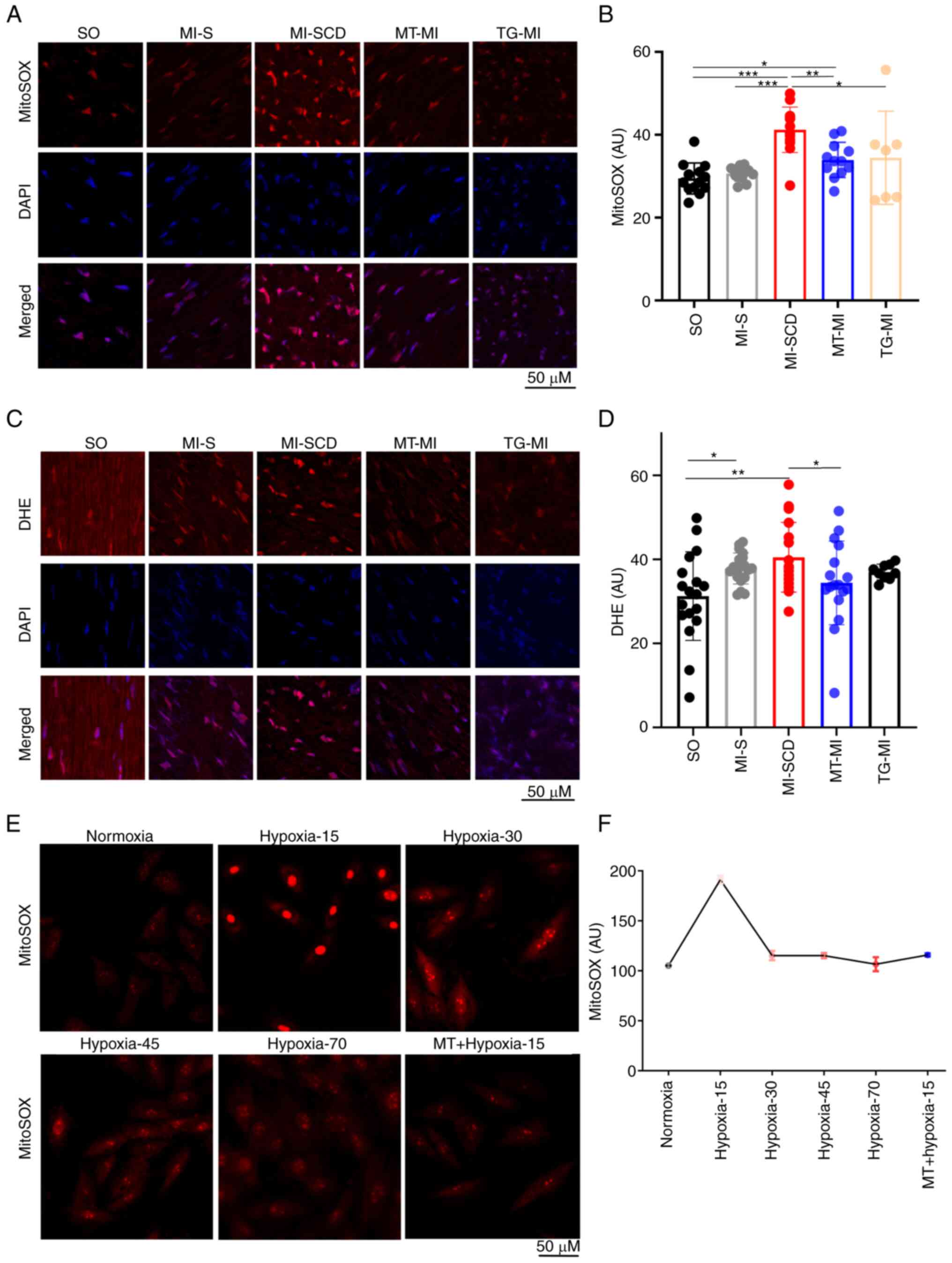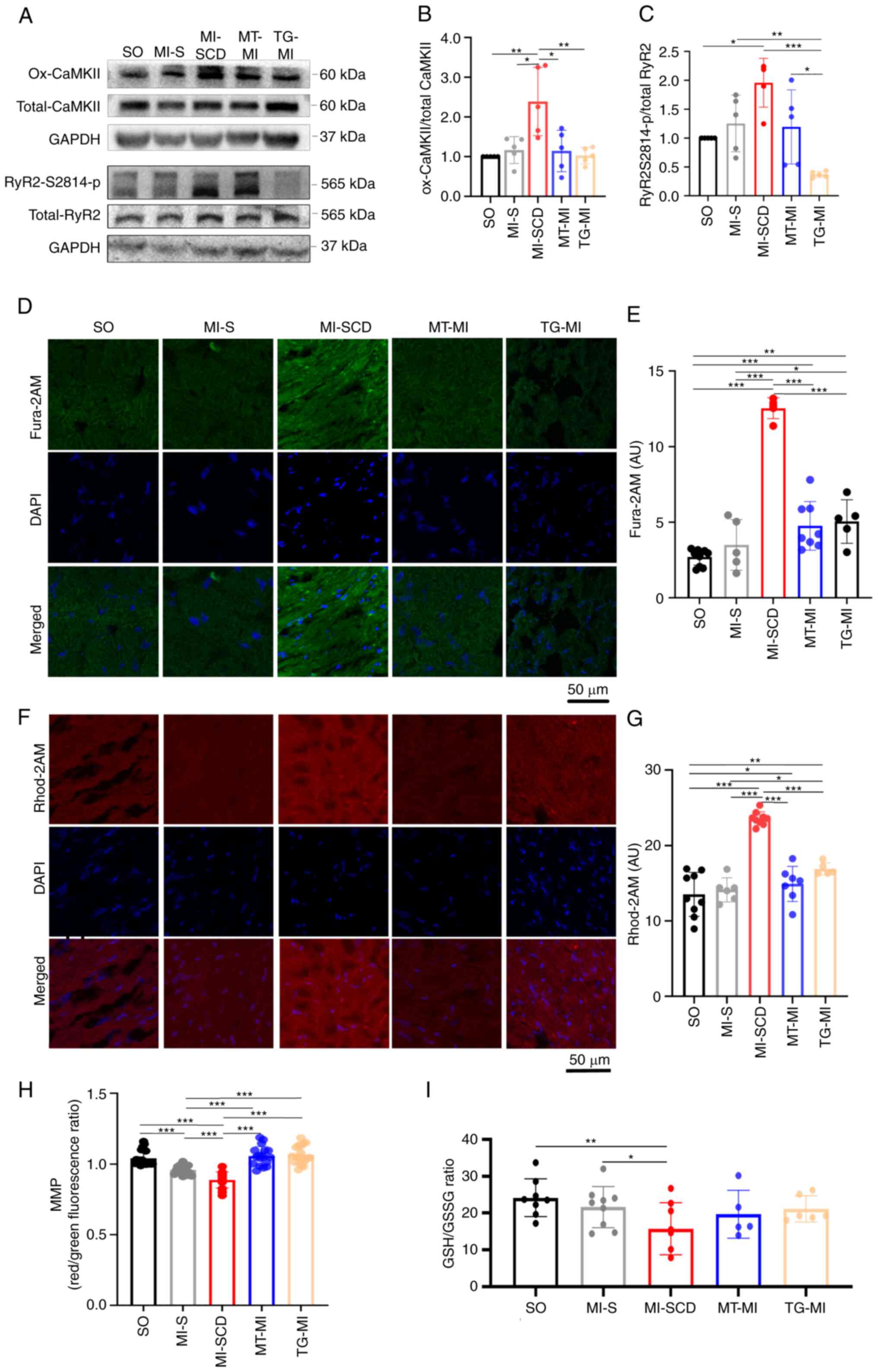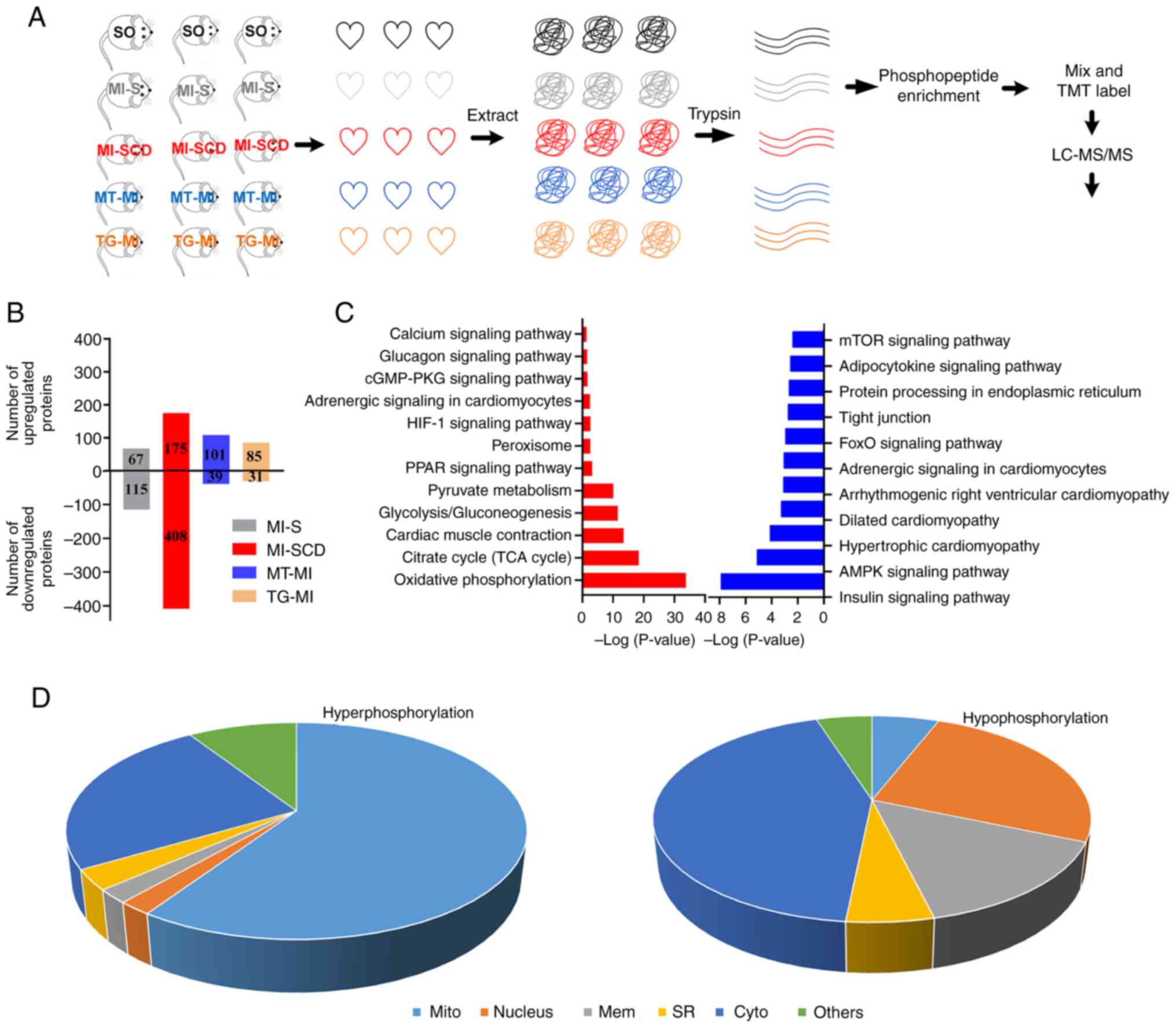|
1
|
World Health Organization (WHO): The top
10 causes of death. WHO; Geneva: 2020, https://www.who.int/news-room/fact-sheets/detail/the-top-10-causes-of-death.
|
|
2
|
Chugh SS, Reinier K, Teodorescu C, Evanado
A, Kehr E, Al Samara M, Mariani R, Gunson K and Jui J: Epidemiology
of sudden cardiac death: Clinical and research implications. Prog
Cardiovasc Dis. 51:213–228. 2008.
|
|
3
|
Al-Khatib SM, Stevenson WG, Ackerman MJ,
Bryant WJ, Callans DJ, Curtis AB, Deal BJ, Dickfeld T, Field ME,
Fonarow GC, et al: 2017 AHA/ACC/HRS Guideline for Management of
Patients With Ventricular Arrhythmias and the Prevention of Sudden
Cardiac Death: Executive Summary: A Report of the American College
of Cardiology/American Heart Association Task Force on Clinical
Practice Guidelines and the Heart Rhythm Society. Circulation.
138:e210–e271. 2018.
|
|
4
|
Zaman S and Kovoor P: Sudden cardiac death
early after myocardial infarction: Pathogenesis, risk
stratification, and primary prevention. Circulation. 129:2426–2435.
2014.
|
|
5
|
Reed GW, Rossi JE and Cannon CP: Acute
myocardial infarction. Lancet. 389:197–210. 2017.
|
|
6
|
Jeong EM, Liu M, Sturdy M, Gao G, Varghese
ST, Sovari AA and Dudley SC Jr: Metabolic stress, reactive oxygen
species, and arrhythmia. J Mol Cell Cardiol. 52:454–463. 2012.
|
|
7
|
Csordas G, Weaver D and Hajnoczky G:
Endoplasmic Reticulum-Mitochondrial Contactology: Structure and
signaling functions. Trends Cell Biol. 28:523–540. 2018.
|
|
8
|
Wang JJ, Park KS, Dhimal N, Shen S, Tang
X, Qu J and Zhang SX: Proteomic analysis of retinal
mitochondria-associated ER membranes identified novel proteins of
retinal degeneration in long-term diabetes. Cells. 11:28192022.
|
|
9
|
Liu X, Wang S, Guo X, Li Y, Ogurlu R, Lu
F, Prondzynski M, de la Serna Buzon S, Ma Q, Zhang D, et al:
Increased Reactive Oxygen Species-Mediated
Ca(2+)/calmodulin-dependent protein kinase II activation
contributes to calcium handling abnormalities and impaired
contraction in barth syndrome. Circulation. 143:1894–1911.
2021.
|
|
10
|
Bertero E and Maack C: Calcium signaling
and reactive oxygen species in mitochondria. Circ Res.
122:1460–1478. 2018.
|
|
11
|
Purohit A, Rokita AG, Guan X, Chen B,
Koval OM, Voigt N, Neef S, Sowa T, Gao Z, Luczak ED, et al:
Oxidized Ca(2+)/calmodulin-dependent protein kinase II triggers
atrial fibrillation. Circulation. 128:1748–1757. 2013.
|
|
12
|
van Oort RJ, McCauley MD, Dixit SS,
Pereira L, Yang Y, Respress JL, Wang Q, De Almeida AC, Skapura DG,
Anderson ME, et al: Ryanodine receptor phosphorylation by
calcium/calmodulin-dependent protein kinase II promotes
life-threatening ventricular arrhythmias in mice with heart
failure. Circulation. 122:2669–2679. 2010.
|
|
13
|
National Research Council of The National
Academies: Guide for the Care and Use of Laboratory Animals. 8th.
National Academy Press; Washington, DC: 2011
|
|
14
|
Albert CM, McGovern BA, Newell JB and
Ruskin JN: Sex differences in cardiac arrest survivors.
Circulation. 93:1170–1176. 1996.
|
|
15
|
Jasmin M, Ahn EH, Voutilainen MH, Fombonne
J, Guix C, Viljakainen T, Kang SS, Yu LY, Saarma M, Mehlen P and Ye
K: Netrin-1 and its receptor DCC modulate survival and death of
dopamine neurons and Parkinson's disease features. EMBO J.
40:e1055372021.
|
|
16
|
Koshy AN, Gow PJ, Testro A, Th AW, Ko J,
Lim HS, Han HC, Weinberg L, VanWagner LB and Farouque O:
Relationship between QT interval prolongation and structural
abnormalities in cirrhotic cardiomyopathy: A change in the current
paradigm. Am J Transplant. 21:2240–2245. 2021.
|
|
17
|
Dey S, DeMazumder D, Sidor A, Foster DB
and O'Rourke B: Mitochondrial ROS drive sudden cardiac death and
chronic proteome remodeling in heart failure. Circ Res.
123:356–371. 2018.
|
|
18
|
Xie D, Wu J, Wu Q, Zhang X, Zhou D, Dai W,
Zhu M and Wang D: Integrating proteomic, lipidomic and metabolomic
data to construct a global metabolic network of lethal ventricular
tachyarrhythmias (LVTA) induced by aconitine. J Proteomics.
232:1040432021.
|
|
19
|
Friedrich C, Schallenberg S, Kirchner M,
Ziehm M, Niquet S, Haji M, Beier C, Neudecker J, Klauschen F and
Mertins P: Comprehensive micro-scaled proteome and phosphoproteome
characterization of archived retrospective cancer repositories. Nat
Commun. 12:35762021.
|
|
20
|
Cox J and Mann M: MaxQuant enables high
peptide identification rates, individualized p.p.b.-range mass
accuracies and proteome-wide protein quantification. Nat
Biotechnol. 26:1367–1372. 2008.
|
|
21
|
Choi M, Chang CY, Clough T, Broudy D,
Killeen T, MacLean B and Vitek O: MSstats: An R package for
statistical analysis of quantitative mass spectrometry-based
proteomic experiments. Bioinformatics. 30:2524–2526. 2014.
|
|
22
|
Shang L, Wang Y, Li J, Zhou F, Xiao K, Liu
Y, Zhang M, Wang S and Yang S: Mechanism of Sijunzi Decoction in
the treatment of colorectal cancer based on network pharmacology
and experimental validation. J Ethnopharmacol. 302(Pt A):
1158762023.
|
|
23
|
Ramirez J, Orini M, Minchole A, Monasterio
V, Cygankiewicz I, Bayés de Luna A, Martínez JP, Pueyo E and Laguna
P: T-Wave morphology restitution predicts sudden cardiac death in
patients with chronic heart failure. J Am Heart Assoc.
6:e0053102017.
|
|
24
|
Kuznetsov AV, Javadov S, Sickinger S,
Frotschnig S and Grimm M: H9c2 and HL-1 cells demonstrate distinct
features of energy metabolism, mitochondrial function and
sensitivity to hypoxia-reoxygenation. Biochim Biophys Acta.
1853:276–284. 2015.
|
|
25
|
Hernansanz-Agustin P, Choya-Foces C,
Carregal-Romero S, Ramos E, Oliva T, Villa-Piña T, Moreno L,
Izquierdo-Álvarez A, Cabrera-García JD, Cortés A, et al: Na(+)
controls hypoxic signalling by the mitochondrial respiratory chain.
Nature. 586:287–291. 2020.
|
|
26
|
Yang KC, Kyle JW, Makielski JC and Dudley
SC Jr: Mechanisms of sudden cardiac death: Oxidants and metabolism.
Circ Res. 116:1937–1955. 2015.
|
|
27
|
Akar FG, Aon MA, Tomaselli GF and O'Rourke
B: The mitochondrial origin of postischemic arrhythmias. J Clin
Invest. 115:3527–3535. 2005.
|
|
28
|
Zorov DB, Juhaszova M and Sollott SJ:
Mitochondrial reactive oxygen species (ROS) and ROS-induced ROS
release. Physiol Rev. 94:909–950. 2014.
|
|
29
|
Schafer FQ and Buettner GR: Redox
environment of the cell as viewed through the redox state of the
glutathione disulfide/glutathione couple. Free Radic Biol Med.
30:1191–1212. 2001.
|
|
30
|
Bagkos G, Koufopoulos K and Piperi C: A
new model for mitochondrial membrane potential production and
storage. Med Hypotheses. 83:175–181. 2014.
|
|
31
|
Crewe C, Funcke JB, Li S, Joffin N,
Gliniak CM, Ghaben AL, An YA, Sadek HA, Gordillo R, Akgul Y, et al:
Extracellular vesicle-based interorgan transport of mitochondria
from energetically stressed adipocytes. Cell Metab. 33:1853–1868
e11. 2021.
|
|
32
|
Ferko M, Andelova N, Szeiffova Bacova B
and Jasova M: Myocardial adaptation in pseudohypoxia: Signaling and
Regulation of mPTP via mitochondrial connexin 43 and cardiolipin.
Cells. 8:14492019.
|
|
33
|
Shetty S, Kumar R and Bharati S:
Mito-TEMPO, a mitochondria-targeted antioxidant, prevents
N-nitrosodiethylamine-induced hepatocarcinogenesis in mice. Free
Radic Biol Med. 136:76–86. 2019.
|
|
34
|
Hegyi B, Borst JM, Bailey LRJ, Shen EY,
Lucena AJ, Navedo MF, Bossuyt J and Bers DM: Hyperglycemia
regulates cardiac K(+) channels via O-GlcNAc-CaMKII and
NOX2-ROS-PKC pathways. Basic Res Cardiol. 115:712020.
|
|
35
|
Rebollo-Hernanz M, Zhang Q, Aguilera Y,
Martin-Cabrejas MA and Gonzalez de Mejia E: Relationship of the
phytochemicals from coffee and cocoa by-products with their
potential to modulate biomarkers of metabolic syndrome in vitro.
Antioxidants (Basel). 8:2792019.
|
|
36
|
Belevych AE, Terentyev D, Terentyeva R,
Nishijima Y, Sridhar A, Hamlin RL, Carnes CA and Györke S: The
relationship between arrhythmogenesis and impaired contractility in
heart failure: Role of altered ryanodine receptor function.
Cardiovasc Res. 90:493–502. 2011.
|
|
37
|
Humphrey SJ, James DE and Mann M: Protein
Phosphorylation: A major switch mechanism for metabolic regulation.
Trends Endocrinol Metab. 26:676–687. 2015.
|
|
38
|
Kalpage HA, Wan J, Morse PT, Zurek MP,
Turner AA, Khobeir A, Yazdi N, Hakim L, Liu J, Vaishnav A, et al:
Cytochrome c phosphorylation: Control of mitochondrial electron
transport chain flux and apoptosis. Int J Biochem Cell Biol.
121:1057042020.
|
|
39
|
Kane LA, Youngman MJ, Jensen RE and Van
Eyk JE: Phosphorylation of the F(1)F(o) ATP synthase beta subunit:
Functional and structural consequences assessed in a model system.
Circ Res. 106:504–513. 2010.
|
|
40
|
Guo X, Niemi NM, Hutchins PD, Condon SGF,
Jochem A, Ulbrich A, Higbee AJ, Russell JD, Senes A, Coon JJ and
Pagliarini DJ: Ptc7p dephosphorylates select mitochondrial proteins
to enhance metabolic function. Cell Rep. 18:307–313. 2017.
|
|
41
|
Wang Z, Ge Y, Bao H, Dworkin L, Peng A and
Gong R: Redox-sensitive glycogen synthase kinase 3β-directed
control of mitochondrial permeability transition: Rheostatic
regulation of acute kidney injury. Free Radic Biol Med. 65:849–858.
2013.
|
|
42
|
Feng J, Zhu M, Schaub MC, Gehrig P,
Roschitzki B, Lucchinetti E and Zaugg M: Phosphoproteome analysis
of isoflurane-protected heart mitochondria: Phosphorylation of
adenine nucleotide translocator-1 on Tyr194 regulates mitochondrial
function. Cardiovasc Res. 80:20–29. 2008.
|
|
43
|
Banks CJ and Andersen JL: Mechanisms of
SOD1 regulation by post-translational modifications. Redox Biol.
26:1012702019.
|
|
44
|
Dieni CA and Storey KB: Regulation of
hexokinase by reversible phosphorylation in skeletal muscle of a
freeze-tolerant frog. Comp Biochem Physiol B Biochem Mol Biol.
159:236–243. 2011.
|
|
45
|
Lee JH, Liu R, Li J, Wang Y, Tan L, Li XJ,
Qian X, Zhang C, Xia Y, Xu D, et al: EGFR-Phosphorylated platelet
isoform of phosphofructokinase 1 promotes PI3K activation. Mol
Cell. 70:197–210 e7. 2018.
|
|
46
|
Akar FG and O'Rourke B: Mitochondria are
sources of metabolic sink and arrhythmias. Pharmacol Ther.
131:287–294. 2011.
|
|
47
|
Landstrom AP, Dobrev D and Wehrens XHT:
Calcium signaling and cardiac arrhythmias. Circ Res. 120:1969–1993.
2017.
|
|
48
|
Barth AS and Tomaselli GF: Cardiac
metabolism and arrhythmias. Circ Arrhythm Electrophysiol.
2:327–335. 2009.
|














